Archive
Limited Edition CCM E-Flex III Authentic Carey Price Custom Setup
It’s a rare opportunity to get new goalie gear before it’s available to the general public. It’s an even rarer opportunity to get authentic pro goalie gear built to the exact specifications of one of the NHL’s best and most popular goalies. Now you can have both with this numbered, limited edition CCM E-Flex III authentic Carey Price custom setup!
These are as authentic as it gets. From the hand angle of the glove to to length of the pads (34+2″) these are the real deal. This is an awesome setup for any high level goalie, Carey Price fan, or goalie gear collector.
Even if authentic pro pads aren’t your thing, don’t miss a chance to check out the new, soon to be released CCM E-Flex III pro goalie gear weeks before they are available for purchase.
Please call 781-646-1600 or email us at info@sportsetc.net with any inquiries regarding this awesome authentic pad setup.
Finding the Proper Fit: Hockey Skates


Finding the right pair of hockey skates can be confusing with so many makes, models and changes to the hockey industry over the years. To simplify things, it is easier to break down skate fit into 3 categories: Tapered/Narrow, Contoured/Mid, and Traditional/Wide. Let’s take a closer look at what we mean and how it relates to the two major skate manufacturers; CCM and Bauer:
1.) Tapered/Narrow Fitting Skates
The tapered style skates generally have a narrower and shallower profile than other models, which allows for a nice, snug fit around the foot for optimum performance. This is the most popular fit within the hockey community and generally caters to an individual with an average foot, but is definitely not right for everyone, especially those with fuller feet. The tapered fit are products of the Bauer Vapor line, and the CCM Jetspeed line- our two best selling models.
2.) Contoured/Mid-Cut Skates
The contoured/mid-cut skates are perfect for someone with average to slightly full cut feet. It runs wider than the tapered line of skates, but still has a firm heel lock to provide a secure fit. This style of fit tends to be our second most popular seller, and offers a perfect blend between a narrow and wide cut skate. Examples of this skate would be the Bauer Supreme series and the CCM Tacks line.
3.) Traditional/Wide Fitting Skates
The traditional or wide cut skates are the fullest cut of any skate models on the market today. The more flexible boot and deeper heel allows for a relaxed and comfortable fit for those with wider feet. If you tend to have a narrow foot, this may not be the best option because the extra space within the skate may cause discomfort or hurt your overall performance. This style of fit is similar to that of a EE width, and has really replaced the need to seek out a different skate in a EE wide. The Bauer Nexus series, and the CCM Ribcor line offer this fit.
If you are able to narrow your search down to these three fit styles, selecting the perfect skate becomes much more manageable. With that said, the BEST way to ensure a proper fit is to come see the experts at Sports Etc!
The New STX Surgeon RX2 Hockey Sticks- Setting Out To Reshape The Game
In the modern era of composite hockey sticks there have been many innovations and changes. The one thing that has remained constant is the shape. For the most part the shape of sticks has been square or, more specifically, rectangular. STX is looking to change all that with the introduction of the Surgeon RX 2 composite stick line featuring Puregrip Technology.
Puregrip Technology gives you an entirely new way to take control of the game. Its innovative, ergonomic design on the underside of the shaft fills the void in your hand left by a traditional shaped hockey stick. The angular shape on the bottom of the stick maximizes hand contact points for advanced stick control and quick, responsive play.
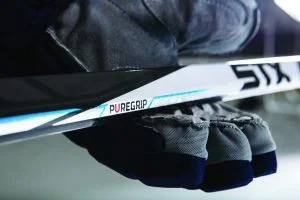
The Puregrip Technology Profile Maximizes Glove Feel
It has the familiar square top, but the bottom is like nothing you’ve ever played with before. It’s like the ultimate hybrid of a hockey stick and a lacrosse stick (STX being one of the leaders in LAX gear being completely coincidental). It has a great feel in the bare hand, but you really need to hold it with hockey gloves to fully appreciate just how different and comfortable this shape is. This unique ergonomic shape creates more contact points in the hand creating greater control.
The STX Surgeon RX2 sticks will be available on June 10th. Stop in and check out the shape of things to come!
A Guide to the Recommended Skate Sharpening Radius
For most hockey players, skate sharpening is typically a matter of personal preference. Some players like to be able to dig into the ice for a firm “bite” or “grip”, while some players like a more shallow hollow for a better “glide” along the ice. There is generally no right or wrong skate sharpening radius, but below are some general guidelines to skate sharpening:
Forward/ Defenseman
The most common skate sharpening radius we see for ice hockey players is a 1/2″ inch or 5/8″ inch cut. The 1/2″ radius would be our typical recommendation because it is the perfect blend of “glide” and “bite.” Some players opt for the 3/8″ cut, but you are definitely sacrificing some “glide,” which can in turn affect your overall speed on the ice. Likewise, players that choose the 3/4″ cut can really sacrifice their “bite,” which can negatively affect quick cuts that are so common in the game of hockey.
Our recommendation: 1/2″ or 5/8″ inch radius.
Goalie
We see the biggest variety of skate sharpening cuts when dealing with ice hockey goalies. Generally, we find that the more experienced goalies opt for a very deep cut, like 3/8″ inch. This allows the goalie to really dig into the ice, and slide post to post to make reactionary saves. Sometimes this can be a difficult radius for inexperienced or younger goalies because there is too much bite, which leads to their goalie skate getting caught underneath them, often tripping them up when sliding post to post. For this reason, we recommended that a more inexperienced goalie choose a 1″ cut, so it as an effortless glide going from post to post.
Our recommendation: 3/8″ or 1/2″ for the experienced goalie, 1″ for the inexperienced goalie.
Figure Skating
Figure skaters generally like a better “glide” along the top of the ice, so we typically see a 1″ cut to maximize a smooth glide. When a figure skater wants to dig into the ice, they do so with their toe pick, so a sharper edge is not necessarily paramount.
Our recommendation: 1″ inch radius.
Seasonal Sharpening
Sometimes the time of year can play a factor in which radius hockey players choose. In the warmer summer months, the ice gets softer, so many players elect for a duller cut to avoid digging too much blade into the ice.
Likewise, in the winter months, when the ice is harder, players often opt for a sharper cut that is more capable of digging into the ice.
Our recommendation: 1/2″ inch radius in the winter. 5/8″ radius in the summer.
Below is a chart that outlines recommended skate sharpening cuts:
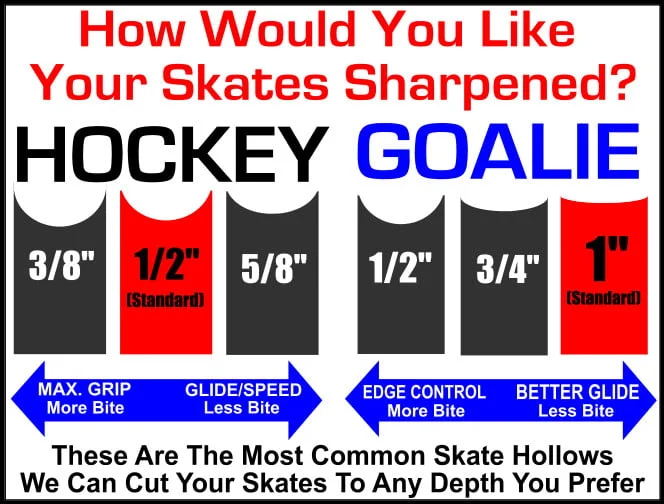
Tips for a Harder Slap Shot
In hockey, there isn’t a much better feeling than completely getting into a slap shot and blowing it by a goalie. But like hitting a perfect drive in golf, ripping the perfect slap shot on the ice can be a matter of consistency- and many times slap shots can become very inconsistent. Here are some tips for improving the velocity and consistency of your slap shot:
Find the Right Hockey Stick
First and foremost, you want to find the perfect weapon that will help you achieve the hardest shot possible. Each player has a different body type and strength level, so you want to make sure your stick suits your game.
A bigger/stronger individual should be using a higher flex stick to get the most power from their shot (something in the 85-110 range; 67 for an intermediate). A player of smaller stature or strength should use a “lighter” or lower flex hockey stick (something in the 75-85 range; 60 for an intermediate).
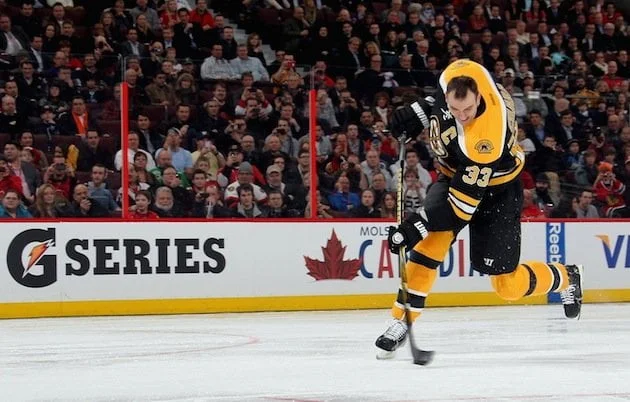
Zdeno Chara stands 6′ 9″ tall and uses a stiff flex of over 130, which helped him achieve the hardest shot ever recorded.
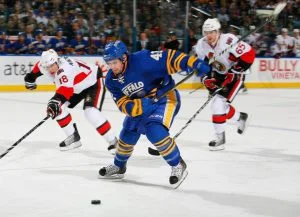
Nathan Gerbe in contrast to Zdeno Chara, is the smallest player in the NHL at 5′ 5″. He uses a much lighter flex on his stick (something in the 67-77 range).
Another added benefit, which can help add velocity to a player’s shot is choosing a “grip” hockey stick. The tacky grip allows you to keep your bottom hand firmly planted on the stick, while taking a shot. This is important because it ensures that there is no slippage of the hand. When the bottom hand slips during a shot, the player loses power that is needed to “load” the stick for a shot.
Longtime NHLer and shooting coach Scott Bjugstad has been advocating grip sticks for some time now. When we met him at an Easton hockey expo, he explained that a huge amount of velocity can be lost on shots when using a non-grip stick.
Have the Proper Technique
When taking a slap shot you want to make sure you attack the puck properly. The puck should be placed towards your back foot. The stick should hit the ice a few inches behind the puck, so you can really “lean” your body into the shot, which in turn allows the stick to flex and “load” for the shot.
Drive the blade of the stick through the puck striking it between the middle/heel of the blade. As you follow through, the puck will naturally roll towards the toe of the blade, which provides extra torque and spin of the puck increasing the velocity even more.
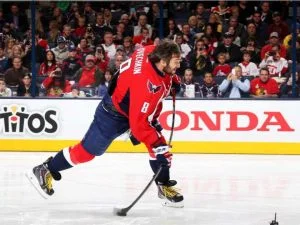
Striking the ice a few inches behind the puck allows the “load” and “flex” of the shaft, which creates all the power behind the slap shot.
Practice Makes Perfect
It may seem obvious, but players like Alex Ovechkin didn’t just become one of the best pure shooters in the NHL by accident. It takes practice. Grab a stick, a sheet of practice ice, and a bucket of pucks- find a spot in your driveway or basement- and shoot. The more you shoot, the more consistent shot you are going to have. Sidney Crosby shot pucks every single day at his parents washing machine in their basement. Find a method of practice that works best for you and work hard to improve your game.
Want a Pro-Level Goalie Leg Pad for Under $1,000 Dollars?
- As most hockey goalie parents know, goalie equipment can be incredibly expensive. If you are playing competitively, quality pro-level leg pads can range anywhere from $1,600-$1,900 dollars. The benefit of a pro-level goalie pad is that they can withstand the repeated abuse of pucks for someone who is playing 4-7 times a week.
- In the hockey industry, it is almost unheard of to find pro goalie leg pads for under $1,000 dollars, but at Sports Etc. we have a wide selection of pro-level pads, that may fit into your budget. Some of these pads may only be a year or two old, but are the same quality of current models. Below are a few examples:
- Bauer Reactor 6000 Pro Leg Pads– (Previously: $1,699.99, NOW $849.99) A softer faced pad with a traditional full knee roll design for any goalie looking for great versatility and flexibility, while still providing a firm blocking surface and strong seal on the ice. The softer face enhances rebound control, while the pro core inserts help customize a goalies desired pad stiffness.
- Brian’s GNetik Pro Leg Pads– (Previously: $1,699.99, NOW $999.99) The G-Netik has an E foam construction, which reduces weight and increases durability. Smart strap system and traditional strapping options allow for enhanced adjustability. A wide knee cradle creates an extremely comfortable landing platform for the knee. A straight thigh profile and squared roll is perfect for any butterfly goaltender looking for a nice seal on the ice.
- Reebok Premier XLT Pro Leg Pads- (Previously: $1,699.99, NOW $999.99) The Premier XLT features cross-link foam technology adding life to the rebound to direct pucks to the corner and allow goalies to recover. The elimination of bindings on the inside landing area provides a solid seal to the ice. No break on the outer flex allows goalie to maximize ice coverage.
- These are just a few examples of some of last years pro leg pads that are an incredible value. Don’t miss out because once these pads are sold, they’re gone! Visit us at www.sportsetc.net or call at 781-646-1600).
The Top 5 Hockey Skate Brands
1.) Bauer Vapor Line
- The Bauer Vapor series has been a staple in the hockey skate industry for over a decade now. The Vapor line continues to be a best-seller because of its reliable, excellent fit. The narrow, tapered fit allows the skate to fit snugly on a players foot, which most hockey players desire to achieve the best performance.
- The new “trigger” holder from Bauer has also had a tremendous impact on the popularity of the brand. The ability to change out broken blades, or freshly sharpened blades on the fly has proven to provide excellent value to the skate.
2.) CCM Jetspeed Line
- The only skate that has been able to successfully put a dent in the Bauer Vapor line, has been the new Jetspeed skate from CCM. The fit is very similar to that of a Bauer Vapor, in that it is a narrow, tapered fit, which allows the boot to sit securely on the foot. Once you get this skate on someone’s foot, it has been an easy sell.
3.) Bauer Supreme Line
- The Bauer Supreme series has been Bauer’s second best-selling skate for a number of years now. The Supreme fits a little bit wider than the Vapor, so if someone has a “fuller” foot and wants a Bauer skate, this is generally the skate for them. The contoured fit around the ankle provides an excellent heel lock, while the spacious mid-foot area creates a comfortable fit.
4.) CCM Tacks Line
- The new CCM Tacks line mimcs the fit of a Bauer Supreme- the contoured boot locks the heel in place, while the slightly wider mid-foot adds space for those with “fuller” feet. The Tacks of a few years ago were extremely wide, and created a very sloppy fit, but have been newly redesigned for a more secure fit.
5.) CCM Ribcor Line
- The CCM Ribcor Line is one of the most comfortable “out-of-the-box” fits on the skate market. The slightly wider width allows for a generous fit, while the softer boot creates a forgiving and comfortable fit. Ideal for any player that values comfort over anything else.
What to Look for in a Goalie Stick
- When choosing a goalie stick, there are some important features to look for when trying to identify the right stick.
- Paddle Height- One of the most common problems that we see in young goaltenders is incorrect paddle height on their stick. It is important to have a good “balance” when you are crouched in the butterfly position. Too often young goalies have paddles that are too large, which throws off their overall balance, and exposes them to bigger rebounds and more areas for the shooter to score. The below picture of Tukka Rask is exactly how you want to be “balanced” when you’re in net. Tuukka gets very low in his stance, so he uses a much smaller paddle than other goalies. There is no uniform measurement for having the properly sized goalie stick, so it is essential to identify what stick height best fits your style of play.
- Weight- The weight of a goalie stick is another overlooked aspect, especially in younger goaltenders. Many times younger goalies have difficulty handling heavier wood sticks. Composite sticks are much lighter, and we typically recommend them to anyone just starting out. For goalies playing at the high school level or higher, we recommend foam core wood sticks. They are slightly heavier than composite sticks, but goalies typically have a much better “feel” for the puck because of the wood construction.
- Feel- Typically, foam core wood goalie sticks generate the best “feel” for the puck. The wood construction allows for a better handle on the puck, and works to “deaden” shots on net. Conversely, composite sticks generate a strong bounce or deflection because of the materials that make up the stick.
- It is important for every goalie to find the best combination of height, weight and feel to find the perfect stick for your game. You shouldn’t have to sacrifice one aspect to achieve another. Make sure to consult the goalie experts at Sports Etc. before your next purchase!
Hockey Parent’s Guide to Fitting Shoulder Pads
In the physical nature of hockey, it is important to have properly fitting shoulder pads. One of the common tendencies when fitting shoulder pads is to look at the shoulder caps themselves. While this is important, there are many other factors to look at when evaluating the fit of a shoulder pad. Below are some of the key features of a good shoulder pad:
- Shoulder Caps- Shoulder caps come in many different shapes and sizes. One of the common misconceptions is that a bigger shoulder cap is more protective. Bigger is not necessarily better. Many shoulder pads now come with a more tapered fit around the shoulder, but offer the same level of protection. You want to make sure the shoulder caps sit directly on top of the shoulders. A shoulder pad that is too large, will slide down the arms of the player and will be more susceptible to shifting around. One that is too small will not properly cover the shoulder.
- Clavicle Protection- Many shoulder pads do not come with a reinforced clavicle protection, so it is important to make sure that there is a reinforced piece of protection over the collar bone. A good shoulder pad will offer this protection.
- Upper Arm Protection- This part of the shoulder pad is often adjustable, and can be slid up and down to offer the best overall protection for the upper arm. The arm of the shoulder pad should meet the top of the elbow pad to ensure the most quality fit.
- Sternum Protection- One of the often overlooked pieces of protection is the sternum. A quality shoulder pad will contain a reinforced piece of padding directly over the sternum area. Many cheaper shoulder pads will offer limited or no protection through this area of the chest.
- Spine Protection- Another extremely important piece of the shoulder pad is the spinal protection. A quality shoulder pad will have a reinforced padding all the way down the spinal cord to ensure protection in an extremely sensitive area of the body. A cheaper shoulder pad will not contain this piece of padding.
Fit Instructions- You want to make sure that the shoulder caps sit directly over the shoulder bone, fully covering the collar bone on each side. The upper arm should meet the top of the elbow pad to fully cover the arm. The shoulder pad should also cover down to at least the middle of the stomach in the front, and midway down the back, where it should meet the hockey pant for full back and kidney protection.

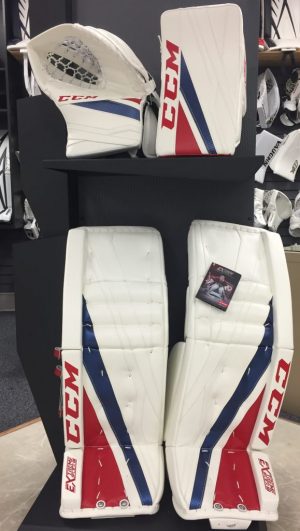
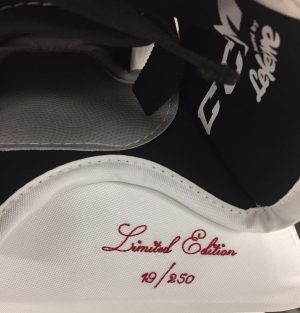

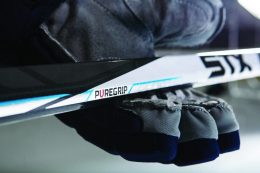

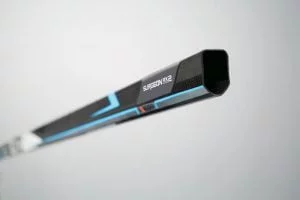
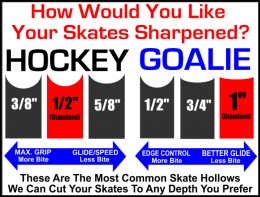
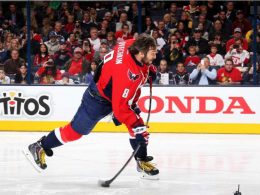
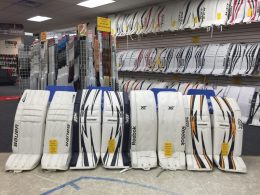


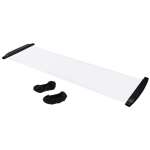
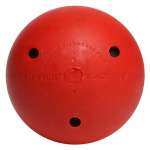
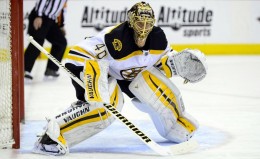
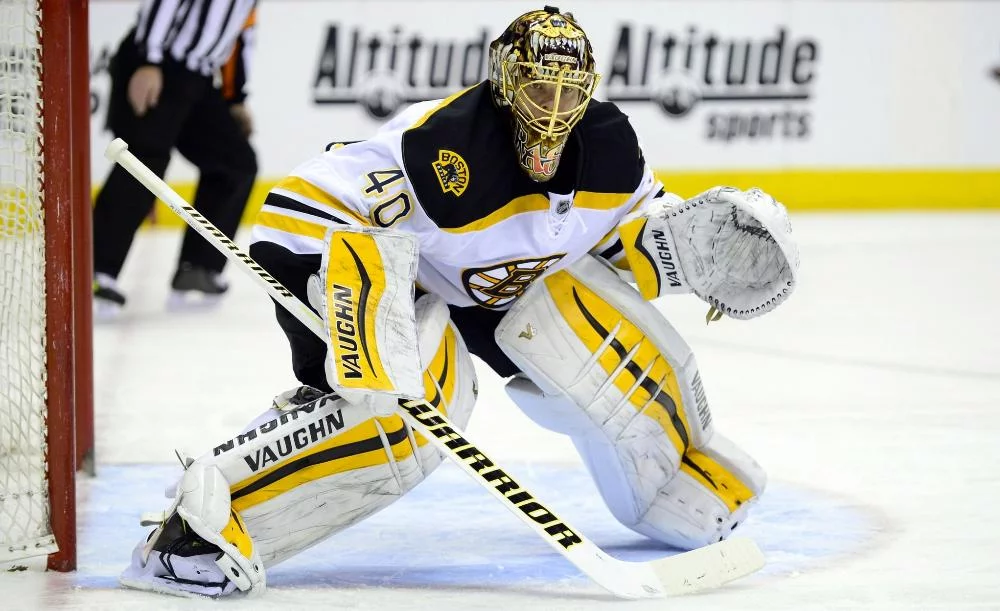
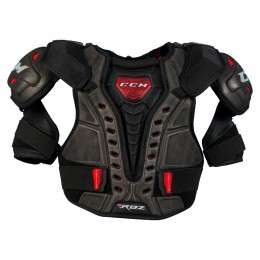






 Location:
Location:  Phone:
Phone:  Email: info@sportsetc.net
Email: info@sportsetc.net